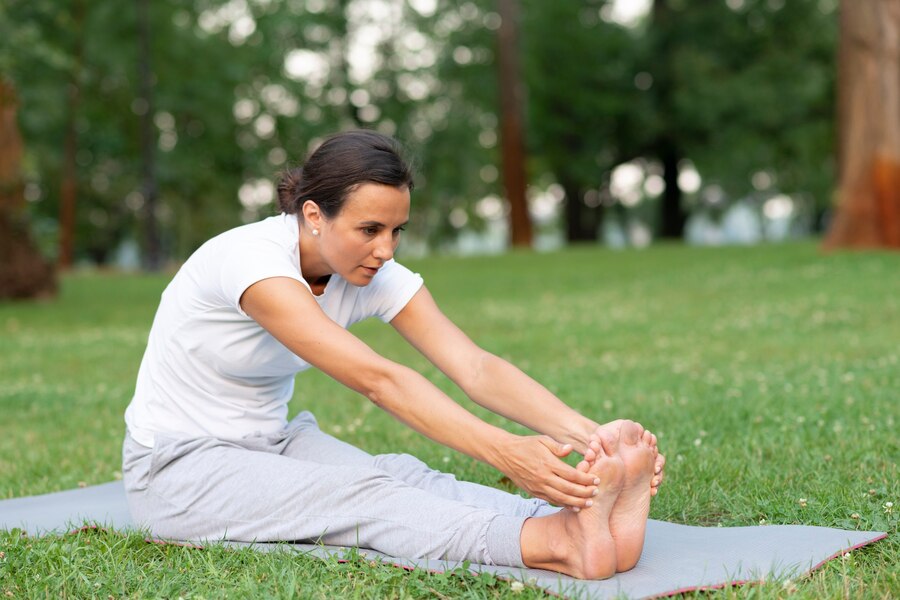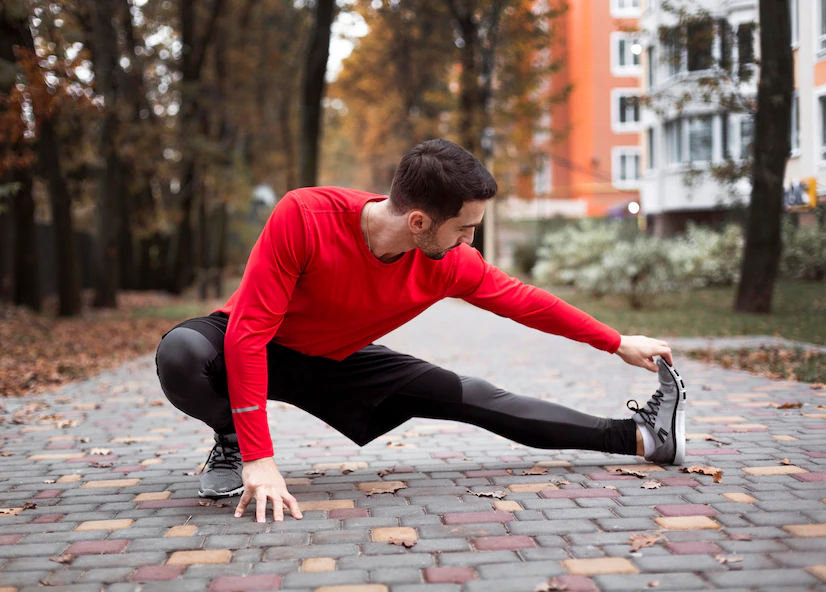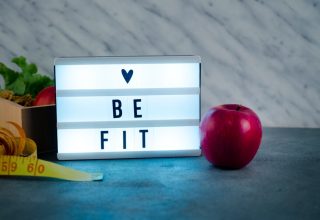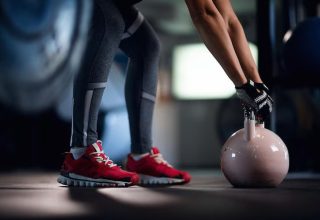Stretching For Injury Prevention: Key Exercises To Keep Your Body Safe
In our busy lives, we seek the freedom to move comfortably. Whether we’re doing things we love or everyday tasks, we don’t want anything to slow us down. That’s where the idea of stopping injuries before they happen comes in. And one really good way to do this is by stretching.
This post will help you see why stretching matters to stop injuries and it will show you some simple exercises that can help.
Contents
The Science Behind Stretching And Injury Prevention

Stretching isn’t just about reaching for your toes or touching your fingertips. It’s about preparing your body for action and reaping some amazing benefits along the way, such as:
- Improved Flexibility: When you stretch, you’re training your muscles and tendons to become more flexible. This means you’ll have a wider range of motion, making everyday movements smoother and more comfortable.
- Enhanced Blood Flow: Stretching increases blood circulation, which means more oxygen and nutrients are delivered to your muscles. This boost in blood flow helps your muscles perform better and aids in their recovery after exercise.
- Addressing Discomfort: If you’re feeling discomfort in your back, for example, addressing it with regular stretches can prevent it from becoming a bigger problem. Incorporating upper back stretches for pain relief can help ease discomfort and stop it from turning into a long-lasting issue or injury.
- Muscle and Tendon Readiness: Think of stretching as a warm-up for your muscles and tendons. When you stretch, these important components get the signal that they’re about to be in action. Therefore, they become more pliable and better equipped to handle physical strain, reducing the risk of strains or tears.
So, how does stretching tie into injury prevention? By regularly stretching, you’re essentially priming your body to move more effectively. This increased flexibility and muscle readiness mean your body is less likely to experience sudden pulls, strains, or other injuries during physical activities.
Stretching acts as a protective mechanism, keeping your body resilient and better prepared to handle the challenges that come your way. So, the next time you take a few minutes to stretch, remember you’re not just indulging in a good feeling – you’re actively guarding your body against harm.
Key Muscle Groups For Injury Prevention
Whether you’re an athlete, an active individual, or someone who values comfortable movement, focusing on specific muscle groups during your stretching routine can significantly contribute to injury prevention.
Hamstrings
These muscles run along the back of your thighs and are essential for walking, running, and bending. Stretching them enhances leg flexibility, reducing the risk of lower back pain and strains caused by tight hamstrings.
Quadriceps
Located at the front of your thighs, quadriceps provide leg strength and stability. Stretching them maintains proper knee function, prevents knee injuries, and ensures balanced muscle development.
Calves
Situated at the back of your lower legs, calf muscles are key for walking, running, and standing. Regular calf stretches help prevent Achilles tendon injuries and conditions like plantar fasciitis, which hinder mobility.
Hip Flexors
Fronting your hips, hip flexor muscles are engaged in walking, running, and sitting. Stretching them combats the effects of prolonged sitting, preventing lower back pain and maintaining hip alignment.
Glutes
Your gluteal muscles, or glutes, are central to stability, posture, and activities like climbing stairs and running. Stretching them keeps your pelvis aligned, reduces the risk of lower back pain, and minimizes strain.
Shoulders
Shoulder muscles often bear stress, particularly for those with desk jobs or frequent smartphone use. Stretching your shoulders relieves tension, boosts upper body mobility, and reduces the chances of shoulder injuries.
Key Exercises To Keep Your Body Safe

- Protecting Your Back: To keep your back strong and injury-free, focus on maintaining a flexible spine. Try to incorporate these exercises:
- Cat-Cow Stretch: Arch and round your back, alternating between the two positions. This helps release tension and keeps your spine supple.
- Child’s Pose: Sit on your heels, reach your arms forward, and lower your chest toward the ground. This gentle stretch eases lower back tension.
- Shoulder Care: Combat shoulder tension, especially from desk work, with these exercises:
- Shoulder Stretch: Gently pull one arm across your chest with the opposite hand, holding the stretch for a few seconds on each side.
- Neck Release: Tilt your head to each side, bringing your ear toward your shoulder. This movement helps release tension in your neck and shoulders.
- Hip and Core Support: Counter the effects of sitting and build core strength with these exercises:
- Standing Hip Abduction: Lift one leg out to the side while balancing on the opposite leg. This engages your hip muscles and improves stability.
- Plank Pose: Hold a plank position, either on your hands or forearms, engaging your core muscles for support.
- Glute Activation: Strengthen your glutes and prevent lower back strain with these exercises:
- Glute Bridge: Lie on your back, bend your knees, and lift your hips off the ground. Squeeze your glutes at the top of the movement.
- Pigeon Pose: Sit on the floor with one leg extended behind you and the other leg bent in front of you. Lean forward to feel the stretch in your glutes.
- Calf Comfort: Ease calf tightness with these stretches:
- Standing Calf Stretch: Stand facing a wall, place one foot behind you, and lean forward to stretch your calf muscles.
- Downward Dog Stretch: Start in a push-up position and push your hips upwards, aiming to press your heels toward the ground.
- Quads and Hamstrings: Maintain balanced strength with these stretches:
- Standing Quad Stretch: Balance on one leg and pull your opposite foot toward your glutes, feeling the stretch in your front thigh.
- Hamstring Stretch: Sit on the floor, extend one leg forward, and reach toward your toes. This movement targets your hamstring muscles.
By incorporating these targeted stretches into your routine, you’re not only enhancing flexibility but also promoting muscle balance and reducing the risk of injuries. Your body will thank you for your care and attention!
Incorporating Stretching Into Your Everyday Life
Stretching isn’t a one-size-fits-all activity; it’s a customized journey that requires careful planning. Here are some tips to get started:
Progress Gradually
Think of your stretching routine as a journey, not a destination. As your flexibility improves over time, gradually increase the intensity and duration of your stretches. Push your boundaries but do so with patience, as overstretching often leads to injuries.
Listen To Your Body
While it’s essential to challenge your body, avoid stretching to the point of intense discomfort. Gradually ease into each stretch and stop if you feel like you’re hurting yourself. Remember, the goal is to enhance flexibility, not to overstrain your muscles.
Focus On Major Muscle Groups
A well-rounded routine targets major muscle groups. Start with larger muscle groups like your legs, back, and chest, and gradually move toward areas like your shoulders and neck. This progression ensures your entire body benefits from the stretches.
Seek Guidance From A Stretch Practitioner
Enlisting the expertise of a stretch practitioner can be a game-changer. A professional understands your body’s limits, tailoring a routine that suits your unique needs. They can guide you through proper techniques, preventing incorrect postures that could lead to injury.
Ready To Feel Better? Start Stretching Today!
Begin your journey toward a healthier you by incorporating simple stretches into your daily routine. It only takes a few moments, but the benefits are lasting. If you’re unsure where to start, consider seeking guidance from a stretch practitioner to ensure you’re on the right track.
Start now and experience the positive impact that stretching can have on your body and well-being. Your body will thank you!
Additional:
- How Exercise Helps You Overcome The Blues
- Equipment To Make Your Exercises More Enjoyable
- The Bean Exercise – What You Need To Know?
- The Importance Of Correct Exercise Form And Technique



